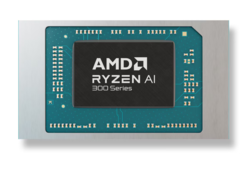AMD's Ryzen AI 5 330 Surfaces with Unusual Single-Core Configuration
AMD appears to be preparing an ultra-budget laptop processor that breaks new ground in core configuration design. The Ryzen AI 5 330 has surfaced in Geekbench testing, revealing a unique setup that pairs just one high-performance Zen 5 core with three efficiency-focused Zen 5c cores—marking the first time AMD has deployed such an asymmetric design in its laptop lineup.
The processor belongs to AMD's Krackan Point family, part of the broader Ryzen AI 300 series that targets mainstream laptops. According to the benchmark listing discovered by hardware enthusiasts, the chip was tested in an Acer laptop configuration with 32GB of RAM, suggesting it may target business or productivity-focused systems despite its entry-level positioning.

Performance testing reveals the compromises inherent in this design approach. The Ryzen AI 5 330 achieved scores of 1,949 points in single-core testing and 7,047 points in multi-core workloads using Geekbench 6.3. These results fall significantly short of its sibling, the Ryzen AI 5 340, which delivers 2,776 points in single-core and 10,668 points in multi-core testing—representing performance gaps of approximately 30% and 34% respectively.
The single-core performance deficit stems from the processor's conservative clock speeds, with the chip reaching a maximum boost frequency of just 3.721 GHz. This relatively modest peak frequency reflects AMD's focus on power efficiency over raw performance in this budget-oriented design. Benchmark data indicates the processor wasn't thermal throttling during testing, suggesting the lower scores reflect intentional design choices rather than cooling limitations.
More significant is the multi-core performance impact of the unusual core configuration. Traditional laptop processors typically feature multiple high-performance cores working in tandem, but the Ryzen AI 5 330's reliance on three efficiency cores for parallel workloads creates a bottleneck in demanding applications. The Zen 5c cores, while power-efficient, operate at lower frequencies and with reduced cache compared to their full-fat Zen 5 counterparts.
The processor also incorporates a scaled-back integrated graphics solution in the form of the Radeon 820M, though specific details about this GPU's configuration remain undisclosed. This graphics chip represents a further reduction from the Radeon 840M found in higher-tier Krackan Point processors, likely featuring fewer compute units and lower operating frequencies to maintain the budget positioning.
Market Positioning and Implications
This asymmetric core design suggests AMD is experimenting with new approaches to budget laptop processors, potentially inspired by the big.LITTLE architectures popularized in mobile devices. The single high-performance core can handle burst workloads and single-threaded applications, while the trio of efficiency cores manages background tasks and lighter parallel workloads without excessive power consumption.
For users, the Ryzen AI 5 330 will likely appeal to those prioritizing battery life and basic productivity over performance. The processor should handle web browsing, office applications, and media consumption adequately, though users requiring intensive multitasking or content creation capabilities would benefit from stepping up to processors with more balanced core configurations.
The emergence of this processor also signals AMD's commitment to competing across all price segments in the laptop market. By offering a truly entry-level option within the AI-branded lineup, AMD ensures access to its latest architectural improvements and AI acceleration features even in budget systems, potentially expanding the reach of these technologies to price-sensitive consumers.
